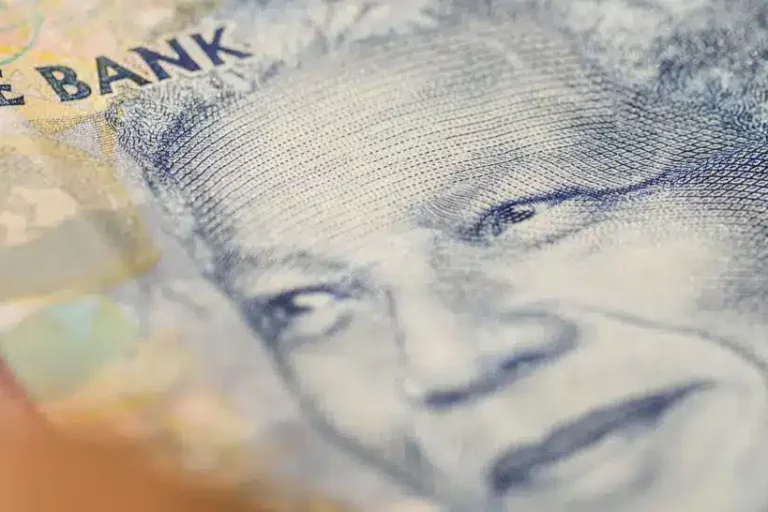#UnrestSA: Time to revitalize SASRIA’s business model to reassure future investors in SA

This is not the first time South Africa has had to grapple with a great disruption to its economic fabric – and it certainly won’t be the last. South African business owners are working hard to rebuild their establishments following the damage and destruction caused by the waves of looting in Kwa-Zulu Natal and Gauteng in July. While the South African Special Risk Insurance Association (SASRIA) has provided vital relief to some businesses to restore operations, most businesses lack the resources required to rebuild as they were not insured for losses resulting from civil commotion and public disorder. This has become a critical point of national concern, knowing that similar events in our country’s future are inevitable.
SASRIA is a very unique South African SOE, the sole provider of cover to all asset-holding individuals and companies in the country, against risks such as strikes, riots and terrorism. Its only role is to pay out claims if such extreme eventualities materialise, and its cover is ordinarily sold and administered by private insurers as part of a broader risk insurance policy. In theory the businesses it insures have the assurance that their cover is underwritten by a large, stable, national, insurance fund rather than a private insurer with limited capacity. SASRIA plays an important economic role by enabling businesses to restore their liquidity or operations quickly after experiencing loss or damages as a result of unrest. However, cover through SASRIA is not compulsory, and the question of whether such cover should be mandatory cover cannot be avoided any longer.
The cost of the unrest in July is quickly mounting, with SASRIA indicating that it will need an additional capital injection of R7.4 billion from National Treasury if claims amount to R25 billion. This, after our national government already committed R3.9 billion to the state-insurer. SASRIA’s Managing Director, Cedric Masondo, recently informed Parliament’s Standing Committee on Appropriations that SASRIA will require additional funds if it is to meet the regulatory 100% solvency capital requirement. Masondo also cautioned that the final amount requested from Treasury would depend on the outcomes of other, alternative capital raising initiatives, which he failed to define.
SASRIA finds itself in a difficult predicament – with hundreds of claims ranging from R1 million right through to R500 million in some cases. Even with the 7 billion it will receive from its reinsurers, it’s capital base is woefully inadequate and it would be ill-advised for the entity to assume that its current business model is fit for future purpose. Revitalizing SASRIA’s business model will be a critical undertaking to protect South African businesses in future – and will form part of a noteworthy campaign to reassure current and prospective investors that there are safety nets available to protect their investments when growing and building businesses in our country.
We need to start thinking about how we can grow SASRIA into a larger company, with a larger client base, which would allow the state-insurer the ability to enjoy greater premium income and vitally and greater spread of risk.
This “scaling” of SASRIA should ultimately be marketed as a commercial concern. SASRIA’s net should ideally include all businesses in South Africa in its fold. If this can be achieved, SASRIA will benefit from greater premium income, with a wider risk spread that lowers overall risk. With a wider risk spread and lower overall risks, SASRIA will also enjoy more attractive reinsurance terms from reinsurers, leading to lower premiums for all. Ultimately, if most – if not all – South African businesses are protected by SASRIA, this will reassure potential investors that it is safe to do business in our country– allowing our economy the opportunity to grow.
Legislatively, national government could make this a compulsory form of insurance for any registered business, which is not currently the case. If this cannot be achieved, then structurally SASRIA must become more aggressive in its marketing and strive to sell to all businesses in the country through multiple channels and methods.
To improve SASRIA’s capital position without government handouts, one could allow private investors into its structure. This offering would be attractive, as unlike other state-owned entities such as SAA, Transnet and Eskom, SASRIA has a long profitable history. That being said, no dividends would have to be declared for the foreseeable future, so a separate class of shares would need to be created for such investments (allowing for dividend stream). The government as majority investor should ultimately agree to also forgo their dividend. Not only would this reduce SASRIA’s burden on national government, but it would also secure its position as a commercial concern.
We will need to be bold in reassessing SASRIA’s current business model if we do not want to see higher premiums resulting in an even smaller number of businesses being covered. We also cannot run the risk of restricted cover limits – which would lower rates but render SASRIA inconsequential to larger industries.
SASRIA has proven that it plays a critical role in our local economy, as an insurance-based economic safeguard that mitigates against the risks associated with public disorder and rioting in South Africa. Thankfully, it is still able to provide this support while our economy reels from the impact of several lockdowns on economic activity, with one of the highest unemployment rates in the world.
SASRIA has provided local businesses with a critical lifeline over the past few weeks. It is now our job to build on SASRIA if we are to show investors that we are serious about protecting – and growing – business in our country.
Andrew Lee is insurance lead at South Africa’s largest independent management consultancy, IQbusiness.
INSIGHTS





